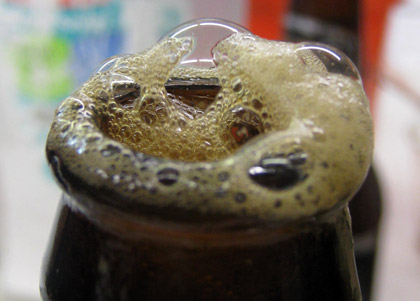If you, like I, think fresh Anchor Liberty is still one of the best beers on earth then the announcement that Anchor Brewing has been sold makes a difference on a very personal level.
In terms of the Future of Craft Brewing overall? Not so much.
Not like it would have between 1965 and 1977, when Anchor accounted for 100 percent of sales of what we now call “craft beer.” In 1980 Anchor sold 81 percent of craft beer and still more than half of it in 1984, just before Jim Koch and Samuel Adams beer arrived. Five years later Koch’s Boston Beer Co., at the time contracting to have its beer brewed at struggling old-line breweries with excess capacity, vaulted past Anchor into the No. 1 spot.
Anchor production peaked at 108,000 barrels in 1996 and began to slip a bit by 1998, at which time it accounted for less than 2 percent of “craft” production. Today Anchor brews less than 5 percent of what Boston Beer makes and about 1 percent of the craft beer.
To be clear, Fritz Maytag and Anchor cast outsized shadows. Maytag’s place in history is, well, Maytag’s place in history. We can only guess what beer choices American beer drinkers would have today had he not saved Anchor Brewing in 1965. But whatever the new owners do — and as Jay Brooks writes this new stewardship begins somewhat oddly — it hardly seems likely any changes will reshape the craft beer landscape that Maytag shares great responsibility for creating in the first place.
I’ll leave it to others to speculate about that and to recount much of what Maytag, who remains as chairman emeritus, and everybody he worked with at Anchor accomplished. Instead I suggest considering something he didn’t do.
In 1992 Maytag investigated the possibility of a direct public offering to raise funds for expansion. At the time the five largest small breweries in the country were Boston Beer (273,000 barrels sold), Anchor (82,654), Sierra Nevada Brewing (68,039), Redhook Ale Brewery (49,000) and Pete’s Brewing (35,700).
Bo Burlingham provides the history in “Small Giants: Companies That Choose to Be Great Instead of Big,” writing, “Besides, the company would eventually have to move up to the next level. It was the natural order of things. Every business has to grow or it dies, right?”
Then Maytag changed his mind. “I realized we were doing the IPO out of desperation — because we thought we had to grow,” Burlingham quotes Maytag. “It occurred to me that you could have a small, prestigious, profitable business, and it would be all right . . . So we made the decision not to grow . . . This was not going to be a giant company — not on my watch.”
By 1996, when Anchor sales peaked, Boston Beer had grown to 1.2 million barrels a year. Pete’s Brewing, which also sold beer brewed under contract, rocketed to 425,600 (its top), while Sierra Nevada (265,000) and Redhook (224,578) both more than doubled Anchor.
Ten years later Maytag was interviewed by USA Today. “Big is not always better,” he said. “Small companies like ours can still knock ’em dead.”
